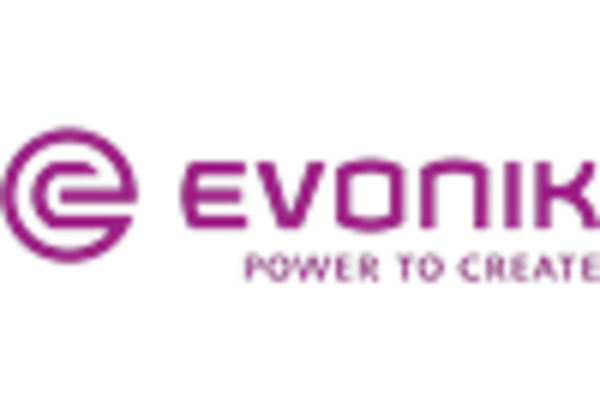Expansion of the Packaging Industry
The expansion of the packaging industry is a pivotal driver for the plastic stabilizer market. With the growing emphasis on convenience and sustainability, the demand for innovative packaging solutions is on the rise. The market for plastic packaging is expected to reach $400 billion by 2027, creating a substantial opportunity for stabilizers that enhance the performance and shelf life of packaging materials. Stabilizers play a crucial role in ensuring that packaging remains intact and effective under various conditions. As manufacturers strive to meet consumer expectations for quality and sustainability, the plastic stabilizer market is likely to benefit from this trend, leading to increased investments in stabilizer formulations.
Increasing Demand for Durable Plastics
The plastic stabilizer market is experiencing a surge in demand driven by the increasing need for durable and long-lasting plastic products. Industries such as automotive, construction, and consumer goods are prioritizing materials that can withstand environmental stressors. This trend is reflected in the projected growth of the plastic stabilizer market, which is expected to reach approximately $3 billion by 2026. The emphasis on durability necessitates the use of effective stabilizers to enhance the longevity and performance of plastic materials. As manufacturers seek to improve product quality, the demand for advanced stabilizers that can provide UV protection and thermal stability is likely to rise, thereby propelling the plastic stabilizer market forward.
Regulatory Compliance and Safety Standards
The plastic stabilizer market is significantly influenced by stringent regulatory compliance and safety standards imposed by government agencies. In the US, regulations regarding the use of additives in plastics are becoming increasingly rigorous, compelling manufacturers to adopt stabilizers that meet safety and environmental criteria. This shift is evident as companies invest in research and development to formulate stabilizers that comply with these regulations. The market is projected to grow at a CAGR of 5% from 2025 to 2030, driven by the need for compliance. As a result, the plastic stabilizer market is likely to see a rise in demand for products that not only enhance performance but also adhere to safety standards.
Rising Consumer Awareness of Product Quality
Rising consumer awareness regarding product quality is significantly impacting the plastic stabilizer market. As consumers become more informed about the materials used in products, there is a growing demand for high-quality plastics that are safe and durable. This trend is prompting manufacturers to invest in superior stabilizers that enhance the overall quality of their products. The plastic stabilizer market is likely to see an increase in demand as companies respond to consumer preferences for reliable and long-lasting materials. This shift not only influences product development but also encourages innovation in stabilizer formulations, ultimately driving growth in the plastic stabilizer market.
Technological Innovations in Stabilizer Production
Technological innovations in the production of plastic stabilizers are reshaping the landscape of the market. Advances in formulation techniques and the development of new stabilizer types are enabling manufacturers to create more effective and efficient products. These innovations are crucial as they allow for the customization of stabilizers to meet specific application needs across various industries. The plastic stabilizer market is projected to grow as companies leverage these technologies to enhance product performance and reduce costs. Furthermore, the integration of smart technologies in stabilizer production may lead to improved quality control and consistency, thereby fostering growth in the plastic stabilizer market.

















Leave a Comment